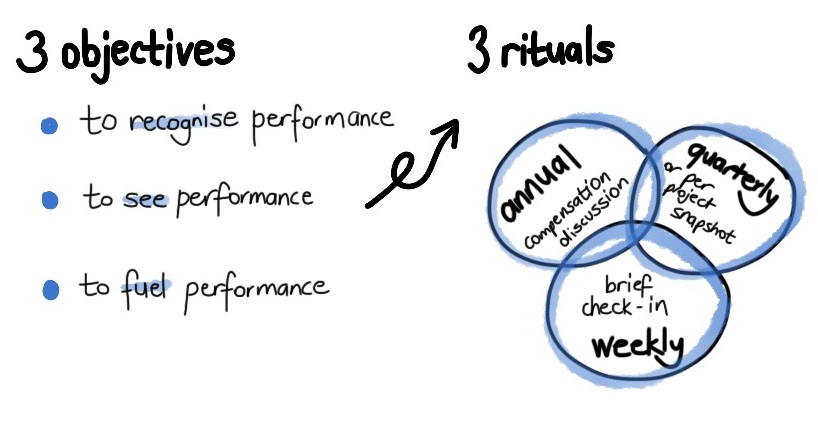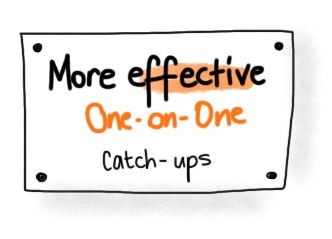1-on-1 : Using your one-on-one catch up to fuel performance
Some really interesting recent research on performance management was published in the Harvard Business Review in April 2015 by Marcus Buckingham and Ashley Goodall from Deloittes.
There were a number of key takeaways in this article, including:
- how to build a performance management system that is nimbler, real-time and more individualised – something focused on fueling performance in the future rather than assessing it in the past.
- the importance of ‘mastery’ and team members having the opportunity to use their strengths – and the very strong correlation with high performance and engagement.

- the important link between the frequency of the one-on-one catch-up and the positive link between performance + engagement.
The article is definitely worth a read as it offers some great insight into a modern day approach to managing performance.
How to get value from your one-on-one catch-up
 For this post, however, we thought it would be useful to share the ideas presented about the use of a one-on-one catch-up between the leader and their team members.
For this post, however, we thought it would be useful to share the ideas presented about the use of a one-on-one catch-up between the leader and their team members.
‘Research into the practices of the best team leaders reveals that they conduct regular check-ins with each team member about near-term work. These brief conversations allow leaders to set expectations for the upcoming week, review priorities, comment on recent work, and provide course correction, coaching, or important new information. The conversations provide clarity regarding what is expected of each team member and why, what great work looks like, and how each can do his or her best work in the upcoming days—in other words, exactly the trinity of purpose, expectations, and strengths that characterizes our best teams.
Our design calls for every team leader to check in with each team member once a week. For us, these check-ins are not in addition to the work of a team leader; they are the work of a team leader. If a leader checks in less often than once a week, the team member’s priorities may become vague and aspirational, and the leader can’t be as helpful—and the conversation will shift from coaching for near-term work to giving feedback about past performance. In other words, the content of these conversations will be a direct outcome of their frequency: If you want people to talk about how to do their best work in the near future, they need to talk often. And so far we have found in our testing a direct and measurable correlation between the frequency of these conversations and the engagement of team members. Very frequent check-ins (we might say radically frequent check-ins) are a team leader’s killer app.’
Their research also found that the best way to ensure frequency is to have check-ins be initiated by the team member—rather than by the team leader.
To support both people in these conversations, they also allowed individual members to understand and explore their strengths using a self-assessment tool and then to present those strengths to their teammates, their team leader, and the rest of the organization.
‘So What?’ / Sense-making
- How often are you meeting your team members – ensuring clarity of expectations, alignment to purpose and an opportunity to explore what is needed for them to do their best work in the coming weeks?
- Are you spending more time on reviewing the past than positively contributing value by helping to fuel future performance?
- How might you tweak your catch-ups with your team members to take advantage of the benefits described in this study?
 Note : Gallup’s 2015 management report found that employees who have regular meetings with their managers are three times more likely to be engaged than employees who do not.
Note : Gallup’s 2015 management report found that employees who have regular meetings with their managers are three times more likely to be engaged than employees who do not.
More information on One-on-Ones
Click here to see a visual representing 4 themes to explore in a 1-on-1
Click here to see another post with some suggestions for 1 – on- 1’s – before, during and after the meeting.
Click here to see a MindTools post entitled ‘How to have a great one-on-one’.
If you would like to read more, here is the link to HBR article mentioned above:
Reinventing Performance Management
Marcus Buckingham and Ashley Goodall
Get the richest view of your workers, not just the simplest.

